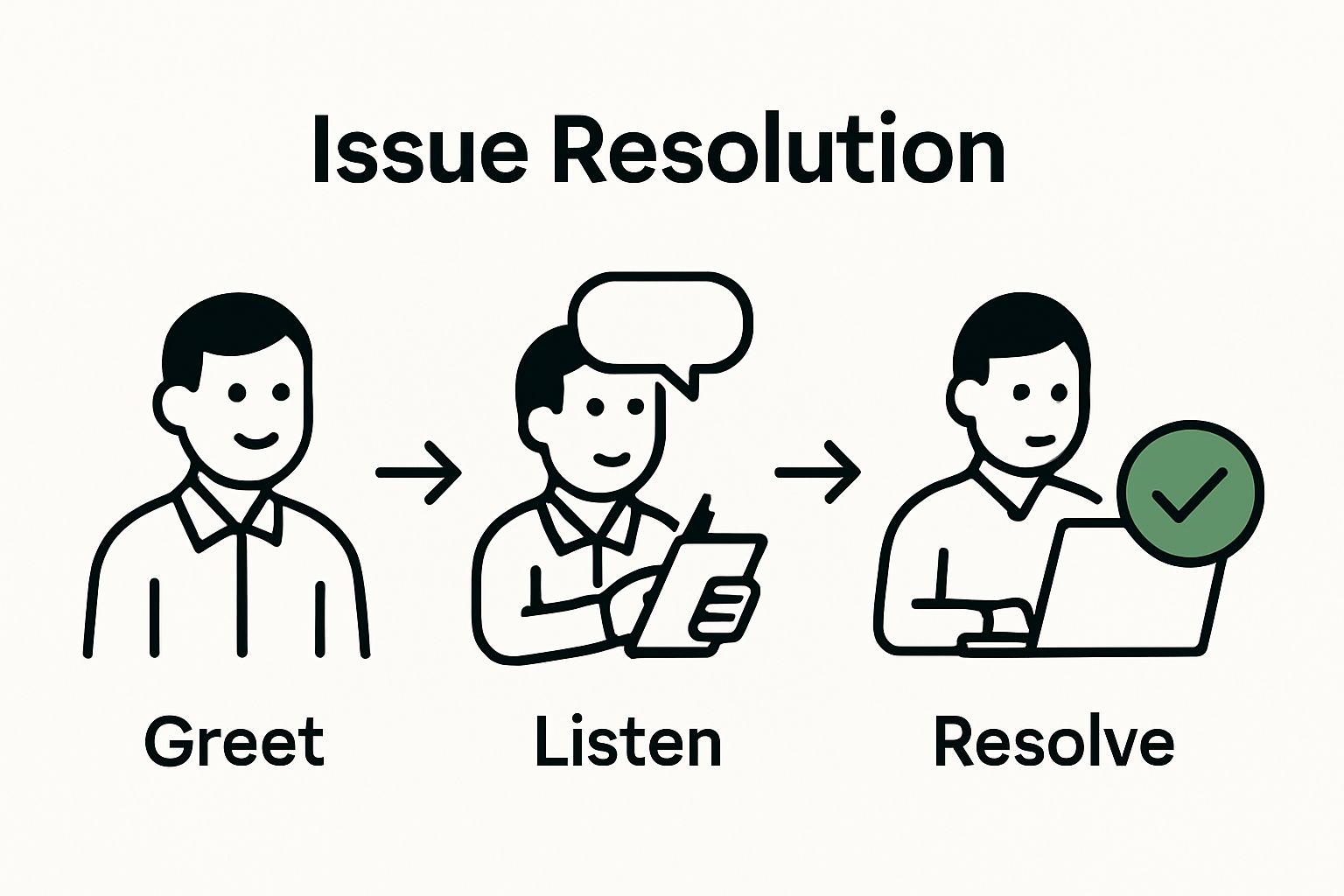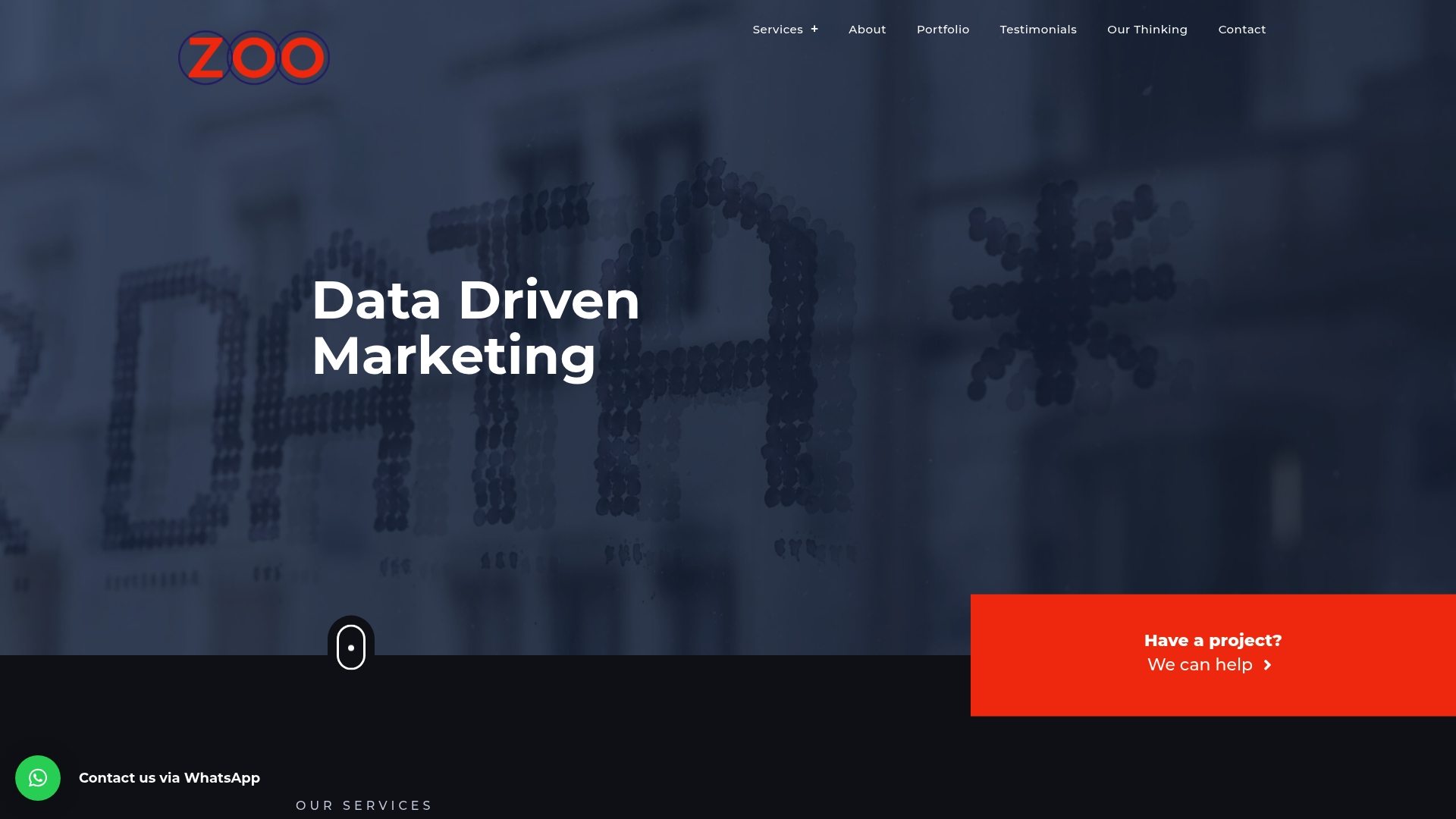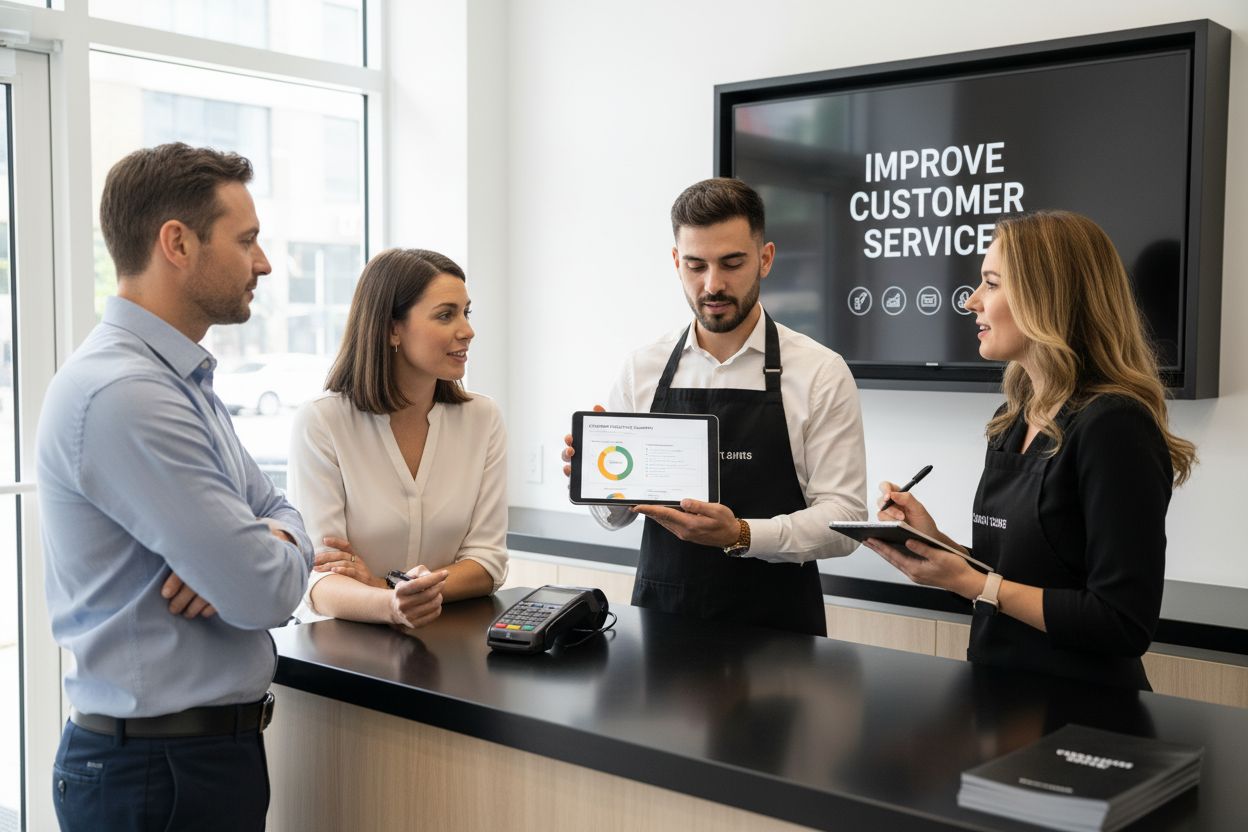Small businesses often think their personal touch is their biggest advantage when it comes to customer service. Yet firms that collect structured customer feedback are 60 percent more likely to design targeted improvements. This means the real edge comes from tracking and fine-tuning your service, not just relying on friendly smiles.
Table of Contents
- Step 1: Assess Your Current Customer Service Practices
- Step 2: Gather Feedback from Your Customers
- Step 3: Train Your Staff on Customer Engagement
- Step 4: Implement Customer Service Tools and Technology
- Step 5: Monitor and Evaluate Customer Service Performance
Quick Summary
| Key Point | Explanation |
|---|---|
| 1. Assess current customer service practices | Conduct a thorough evaluation to identify strengths and areas needing improvement for strategic enhancements. |
| 2. Gather customer feedback effectively | Create diverse feedback channels to transform customer opinions into actionable insights for service improvement. |
| 3. Train staff for better engagement | Implement comprehensive training focusing on emotional intelligence and communication to enhance customer interactions. |
| 4. Utilize technology strategically | Select and integrate appropriate tools that improve communication and support while maintaining personal connections. |
| 5. Monitor performance continuously | Develop meaningful metrics and encourage a culture of continuous improvement based on customer service data. |
Step 1: Assess Your Current Customer Service Practices
Improving customer service begins with a thorough and honest assessment of your current practices. This foundational step allows small businesses to understand their existing strengths and identify critical areas requiring improvement. By conducting a comprehensive evaluation, you create a strategic roadmap for enhancing your customer interaction quality.
Understanding Your Service Landscape
Starting your assessment requires gathering comprehensive data about your current customer service performance. Begin by collecting feedback from multiple sources including direct customer surveys, online reviews, and internal team observations. Customer Experience Index research suggests that businesses with structured feedback mechanisms are 60% more likely to develop targeted improvement strategies.
Carefully review all customer interaction channels such as telephone support, email correspondence, social media responses, and in-person interactions. Pay special attention to response times, resolution rates, and the overall tone of communication. Document specific instances where customer expectations were not met and analyze the root causes behind these service gaps.
Implementing Assessment Tools
Utilize both qualitative and quantitative assessment methods to gain a holistic view of your customer service performance. Consider implementing tools and techniques that provide measurable insights:
- Customer Satisfaction Surveys: Short, targeted questionnaires that capture immediate feedback
- Net Promoter Score (NPS) Tracking: A standardized metric measuring customer loyalty
- Support Ticket Analysis: Reviewing resolution times and customer interaction quality
The goal of this assessment is not to criticize but to create a constructive framework for meaningful improvements. By systematically examining your current customer service practices, you establish a clear baseline from which strategic enhancements can be developed. Remember that assessment is an ongoing process requiring regular review and adaptation to evolving customer expectations and business dynamics.
Step 2: Gather Feedback from Your Customers
Customer feedback is the lifeblood of service improvement for small businesses. This crucial step transforms passive customer interactions into actionable insights that drive meaningful change. By creating multiple channels for honest customer input, you unlock a powerful diagnostic tool that reveals exactly where your service excels or needs refinement.
Designing Effective Feedback Channels
Successful feedback collection requires a strategic approach that makes sharing opinions easy and comfortable for customers. Consider developing a multi-channel feedback strategy that meets different customer preferences. Customer Experience research indicates that businesses offering diverse feedback options see 35% higher engagement rates.
Start by implementing straightforward feedback mechanisms across various touchpoints. Digital surveys can be embedded directly into your website or sent via email immediately following a customer interaction. Short, focused questionnaires work best. Design them to be concise yet comprehensive, asking specific questions about service quality, responsiveness, and overall satisfaction. Avoid complex language and ensure the survey takes no more than three to five minutes to complete.
Encouraging Honest and Constructive Responses
Creating an environment that welcomes genuine feedback requires building trust with your customer base. Communicate clearly that all input is valued and will be used to improve service quality. Offer incentives such as small discounts or entry into a prize draw to increase participation rates. Implement a transparent process where customers can see how their feedback translates into actual service improvements.
Key feedback collection methods include:
- Online Surveys: Quick digital questionnaires with rating scales
- Follow-up Phone Calls: Personal touch for detailed insights
- Social Media Polls: Casual and easily accessible feedback mechanism
Remember that gathering feedback is only the first step. The real value comes from carefully analyzing responses, identifying patterns, and developing targeted strategies to address customer concerns. Treat each piece of feedback as a valuable opportunity to refine your customer service approach and demonstrate your commitment to continuous improvement.
Below is a comparison of common customer feedback collection methods, their key features, and suitability for small businesses in South Africa.
| Feedback Method | Features | Best Used For |
|---|---|---|
| Online Surveys | Quick, scalable, provides quantitative data | Post-purchase or general feedback |
| Follow-up Phone Calls | Personal, allows for detailed, qualitative insights | Resolving complex issues |
| Social Media Polls | Casual, accessible, increases engagement | Fast sentiment checks |
| In-person Feedback | Direct conversation, builds rapport | After in-store purchases |
| Email Questionnaires | Convenient for customers, allows detailed responses | Longer-form or follow-up queries |
Step 3: Train Your Staff on Customer Engagement
Customer engagement training transforms front-line staff from mere transaction processors into genuine relationship builders. This critical step ensures your team understands not just the mechanics of service, but the art of creating memorable customer experiences. Learn more about creating customer loyalty to complement your training efforts.
Developing Comprehensive Training Strategies
Effective training goes beyond basic procedural instructions. It requires a holistic approach that combines technical skills with emotional intelligence. Customer service research demonstrates that businesses investing in comprehensive staff training see up to 25% higher customer retention rates.
Begin by designing a structured training program that addresses multiple dimensions of customer interaction. Focus on developing communication skills that emphasize active listening, empathy, and problem-solving. Your training should include scenario-based learning where staff practice handling various customer situations, from routine inquiries to challenging complaint scenarios. Role-playing exercises can be particularly effective in building confidence and developing nuanced communication techniques.
Implementing Ongoing Learning Mechanisms
Training is not a one-time event but a continuous process of skill refinement. Create mechanisms for regular skill assessment and development. Implement mentorship programs where experienced team members guide newer staff, sharing insights and best practices. Develop a feedback loop where customer interactions are periodically reviewed, allowing staff to understand their performance and identify areas for improvement.
Key training focus areas include:

- Communication Skills: Verbal and non-verbal communication techniques
- Emotional Intelligence: Understanding and managing customer emotions
- Problem-Solving: Developing creative solutions to customer challenges
Remember that successful customer engagement training requires commitment from leadership. Managers must actively support continuous learning, provide resources, and demonstrate the customer service standards they expect from their team. By investing in comprehensive staff training, small businesses can create a culture of exceptional customer service that differentiates them in a competitive marketplace.
Step 4: Implement Customer Service Tools and Technology
Technology has revolutionized how small businesses approach customer service, offering sophisticated solutions that can dramatically improve interaction quality and efficiency. This step focuses on selecting and integrating the right technological tools that streamline communication and enhance customer experience without losing the personal touch that sets small businesses apart.
Selecting Appropriate Technology Solutions
Research from Gartner reveals that businesses leveraging customer service technologies can reduce support costs by up to 30% while improving customer satisfaction. When choosing technology, prioritize solutions that align with your specific business needs and customer interaction patterns. Consider cloud-based customer relationship management (CRM) systems that provide comprehensive tracking of customer interactions, allowing your team to maintain context across different communication channels.
Integrate multichannel communication platforms that enable seamless interactions through email, social media, live chat, and telephone. These systems should offer features like ticket tracking, automated response capabilities, and real-time customer interaction monitoring. The goal is to create a unified communication ecosystem that allows your team to respond quickly and consistently across all platforms.
Ensuring Smooth Technology Implementation
Successful technology adoption requires more than just purchasing software. Develop a structured implementation plan that includes comprehensive staff training, gradual rollout, and continuous performance evaluation. Create protocols for data management, ensuring customer information remains secure and privacy standards are maintained. Test each new tool thoroughly before full deployment, and be prepared to provide additional support to staff during the transition period.
Key technological tools for small business customer service include:
- CRM Systems: Centralized customer interaction tracking
- Live Chat Software: Real-time customer support
- Automated Ticketing Systems: Efficient issue resolution tracking
Remember that technology should enhance human interaction, not replace it. The most effective customer service strategies blend technological efficiency with genuine human connection.
Here is an overview of essential tools and technologies that can support small business customer service, with their main purposes summed up.
| Tool/Technology | Purpose | Key Benefit |
|---|---|---|
| CRM Systems | Track and organise customer interactions | Centralises customer info for efficiency |
| Live Chat Software | Real-time communication with customers | Provides instant support and response |
| Automated Ticketing | Manage and track service requests | Ensures issues are logged and followed up |
| Multichannel Platforms | Connects email, social media, phone | Creates unified customer service experience |
| Analytics Dashboards | Visualise service metrics and trends | Aids in performance monitoring and insight |
Step 5: Monitor and Evaluate Customer Service Performance
Performance monitoring transforms customer service from a reactive process into a strategic business function. This critical step allows small businesses to understand their service quality, identify improvement opportunities, and demonstrate continuous commitment to customer satisfaction. According to Harvard Business Review, measuring customer effort and interaction complexity provides deeper insights than traditional satisfaction metrics.
Developing Comprehensive Performance Metrics
Creating a robust performance evaluation system requires selecting meaningful metrics that capture the nuanced aspects of customer service. Look beyond simple numerical indicators and develop a holistic assessment framework. Track key performance indicators such as response time, resolution rate, customer satisfaction scores, and repeat issue frequency. These metrics provide a multidimensional view of your service quality, revealing both strengths and potential areas for improvement.
Establish a consistent tracking mechanism that allows real-time monitoring of customer service interactions. Implement regular review sessions where team members can discuss performance data, share insights, and collaboratively develop improvement strategies. This approach transforms performance evaluation from a passive measurement exercise into an active learning and development process.
Creating a Continuous Improvement Culture
Successful performance monitoring goes beyond collecting data. It requires creating an organizational culture that views customer feedback and service metrics as valuable opportunities for growth. Encourage transparency by sharing performance insights with your entire team, celebrating successes, and addressing challenges constructively. Use data-driven insights to inform training programs, refine communication strategies, and make strategic business decisions.
Key performance tracking methods include:
- Customer Satisfaction Surveys: Quantitative and qualitative feedback collection
- Performance Dashboards: Visual representation of service metrics
- Regular Team Performance Reviews: Structured analysis of individual and team achievements
Remember that performance monitoring is an ongoing process. Regularly reassess your metrics, stay adaptable to changing customer expectations, and maintain a commitment to continuous improvement. By treating customer service performance as a dynamic, evolving aspect of your business, you create a responsive and customer-centric organizational culture.

Ready to Transform Your Customer Service and Stand Out?
Running a small business today means facing real pressure to deliver fast and memorable customer experiences. This article highlighted the challenges of building customer loyalty, collecting real feedback, and using the right technology for personal and efficient service. Still struggling to turn feedback into action or make sense of tracking tools? Let Zoo Digital help you bridge the gap with expert support and proven digital solutions.

Take the stress out of customer service improvement. Work with a specialist who makes tools like Hubspot CRM, WhatsApp automation, and tailored web development easy and effective. Visit Zoo Digital now and see how our data driven marketing approach can help you grow retention and keep your customers coming back. Connect with our team today and let us help you create the consistent service your clients deserve. The next step forward for your business is just a click away.
Frequently Asked Questions
How can I assess my current customer service practices?
To assess your current customer service practices, gather feedback from various sources such as customer surveys, online reviews, and team observations. Analyze response times, resolution rates, and communication tone to identify strengths and weaknesses.
What are effective ways to gather customer feedback?
Effective ways to gather customer feedback include implementing online surveys, follow-up phone calls, and social media polls. Ensure that feedback mechanisms are simple and encourage honest and constructive responses from customers.
How should I train my staff for better customer engagement?
Train your staff on customer engagement by focusing on communication skills, emotional intelligence, and problem-solving. Incorporate role-playing and scenario-based learning to help them effectively handle different customer situations.
What technology tools can improve customer service for small businesses?
Small businesses can improve customer service by using CRM systems for tracking interactions, live chat software for real-time support, and automated ticketing systems for efficient issue resolution tracking.
Recommended
- How to Build a Marketing Strategy for Small Businesses in 2025 – Zoo Digital
- Digital Marketing for Beginners: 2025 Guide for Small Businesses – Zoo Digital
- How to Use Marketing Analytics for Small Businesses in 2025 – Zoo Digital
- Digital Marketing Terms Explained for Small Businesses 2025 – Zoo Digital
- Agility is needed to meet and exceed customer needs – Berriault and Associates Consulting Group
- Verbeteren klanttevredenheid: 7 stappen naar succes in 2025 – AlexandervanDijl.nl – Bel 020 262 1789

